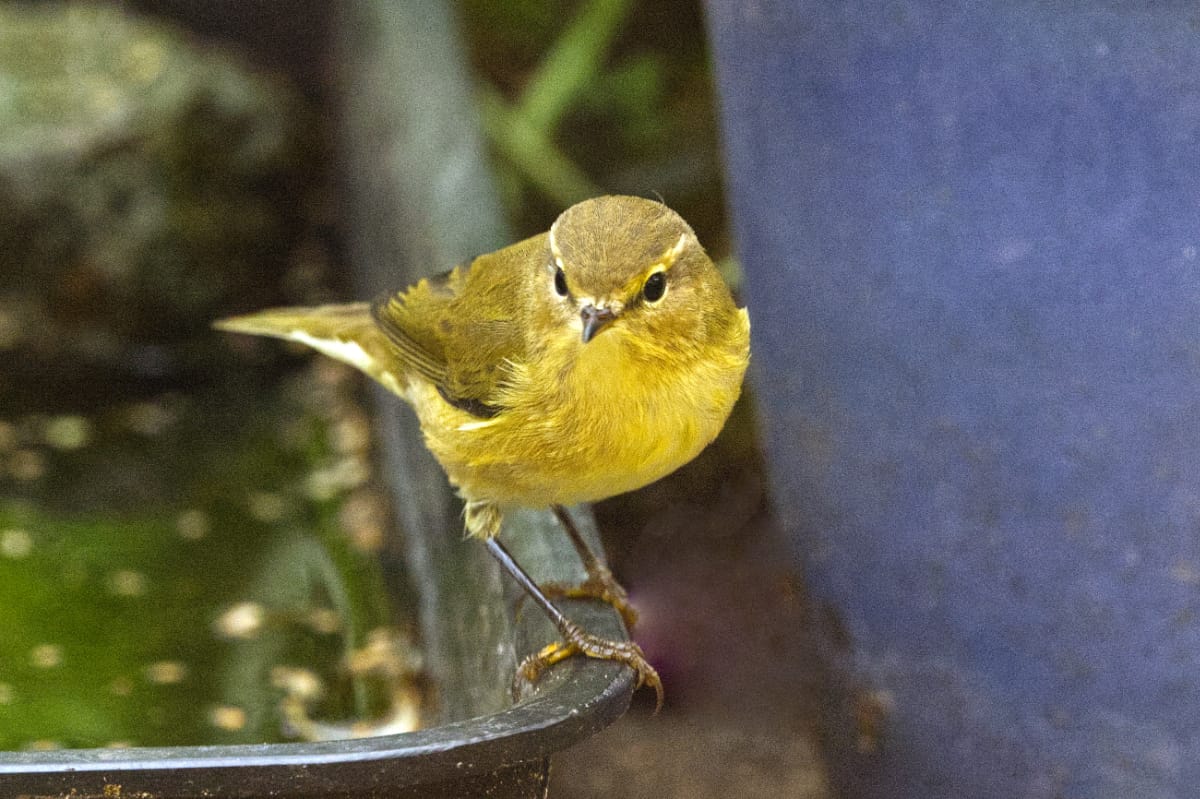The Delightful Chiffchaff: A Garden Visitor You'll Love
It's a true joy to welcome Chiffchaffs to my garden from March through to late September. These charming little birds are often among the first migrants to arrive in the UK, signalling the start of spring, and some are even choosing to stay year-round now. We're seeing an expanding population of wintering Chiffchaffs, especially in Southern England and Ireland, and it's wonderful to think some of these may have been born right here.
Identifying the Chiffchaff
About the size of a Blue Tit, the Chiffchaff can sometimes be mistaken for a Willow Warbler. However, there are subtle differences to help you tell them apart.
- Adults: In spring and summer, male Chiffchaffs sport an olive-green upper body and a creamy white underside. They have a pale stripe above the eye (a supercilium) and a matching eye ring. Adult females look very similar. Key identifiers include their dark legs and bills. While they resemble Willow Warblers, the Chiffchaff's supercilium is less bright, their tail tends to wag rather than flick, and their wings are shorter.
- Juveniles: Young Chiffchaffs of both sexes are similar to adults, but with a more noticeable yellowish tinge on their undersides.
Life Cycle and Habitat
- Eggs: The female Chiffchaff builds a domed nest on or near the ground, often hidden among brambles or nettles. She uses plant material and lines it with feathers. The smooth, white eggs, marked with purple or black, are incubated by the female for 12 to 14 days.
- Breeding: Chiffchaffs prefer to breed in woodlands, copses, and shrubby areas with thick undergrowth, though they generally avoid dense coniferous woodland. In autumn and winter, they may also visit parks and gardens.
- Song and Call: The Chiffchaff's distinctive song, a shrill "chiff chaff, chiff chaff," gives the bird its name. Its call is a repeated, high-pitched "hweet."
- Diet: These active birds primarily feed on insects like midges, caterpillars, and moths. They diligently search tree canopies and bushes for prey, living up to their scientific name, Phylloscopus collybita, which means "leaf explorer." They are very fond of aphids, and will search the underside of leaves to find them.
- Habitat: While resident in southern areas of Britain, Chiffchaffs migrate from the Mediterranean and Africa to more northerly regions during the summer. They thrive in a variety of habitats, including heathland, moorland, farmland, wetlands, woodland, and even towns and gardens.

Photos of both Chiffchaffs have been provided by David Radisic
Chiffchaff Facts
- Scientific Name: Phylloscopus collybita
- Category: Tits, crests and warblers
- Length: 10-11cm
- Wingspan: 12-21 cm (approximately 18cm average)
- Weight: Approximately 9g
- Average Lifespan: 2 years
- Breeding Starts: April
- Number of Eggs per Clutch: 4-9
- Conservation Status: Classified as Green in the UK under Birds of Conservation Concern 5.
Attracting Chiffchaffs to Your Garden
Creating a wildlife-friendly garden is the best way to attract Chiffchaffs, I started to spot them in my garden once I added a small pond. Here are some tips:
- Embrace a "wilder" approach, allowing insects like aphids to flourish among your plants. Let the birds naturally control insect populations.
- Plant buddleia and white campion to encourage moth caterpillars, a favourite food source.
- Provide trees and allow some areas of your garden to grow wild.
- Provide a variety of water sources. Shallow dishes, plant trays and small ponds are all excellent.
My own garden, with its abundance of insects, caterpillars, and diverse water sources, is a regular haunt for Chiffchaffs. They visit daily, enjoying baths and foraging for their favourite foods.
Conservation
While Chiffchaff populations have stabilised and grown in recent decades, it's important to remember that they, like other migratory birds, are vulnerable to habitat changes in Africa and the effects of climate change.
You may find the following blogs useful:

Please Note: I'm an enthusiastic gardener and wildlife observer, learning through hands-on experience and personal observation. While I love sharing my journey and the things I discover, please understand that I am not a qualified expert or professional in wildlife.
The information shared on this blog reflects my own experiences and should not be taken as professional advice. What works for me in my garden and local environment may not be suitable for yours.
I am always eager to learn and improve! If you happen to notice any inaccuracies or have additional insights to share, please feel free to contact me.
Happy gardening and wildlife watching!

